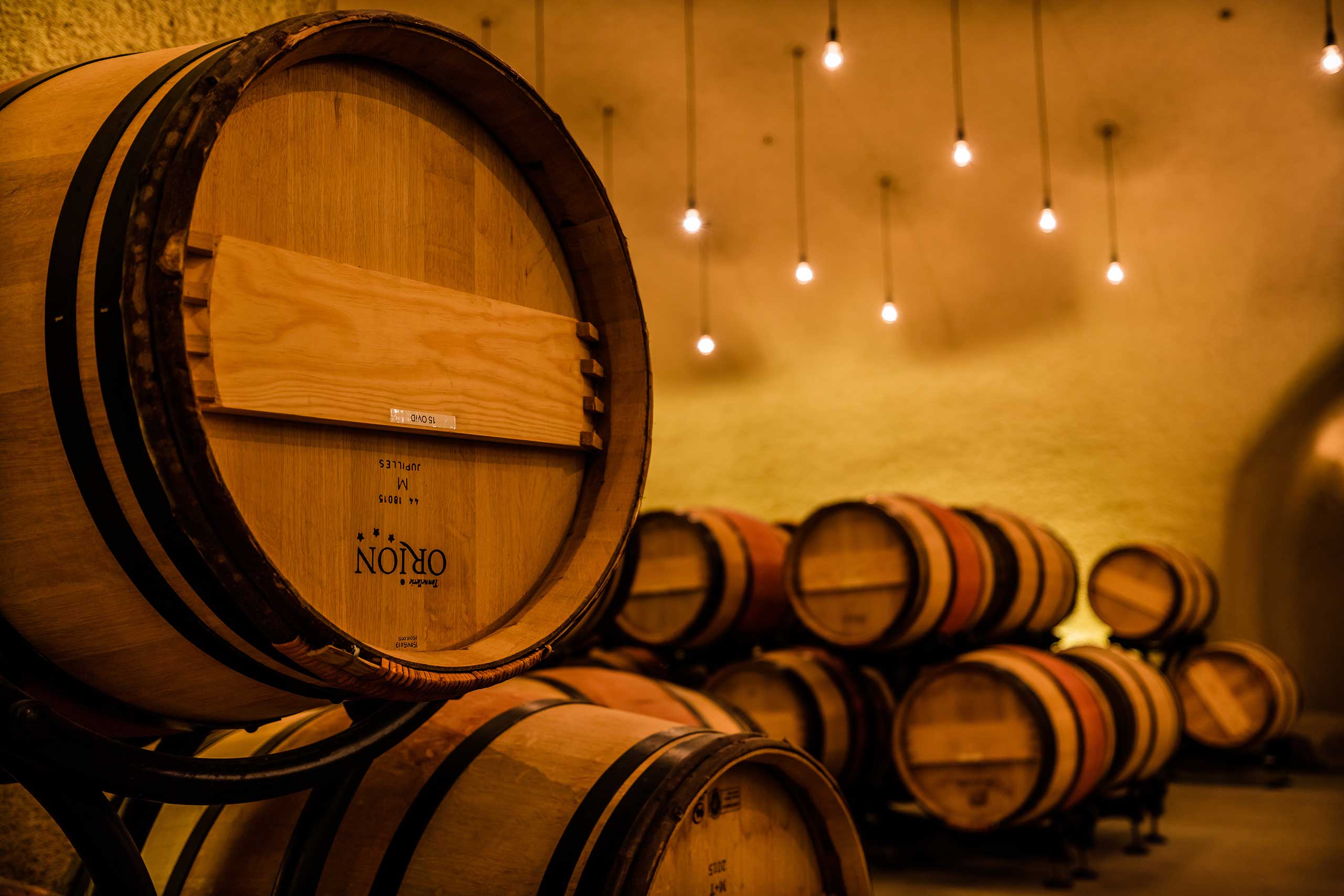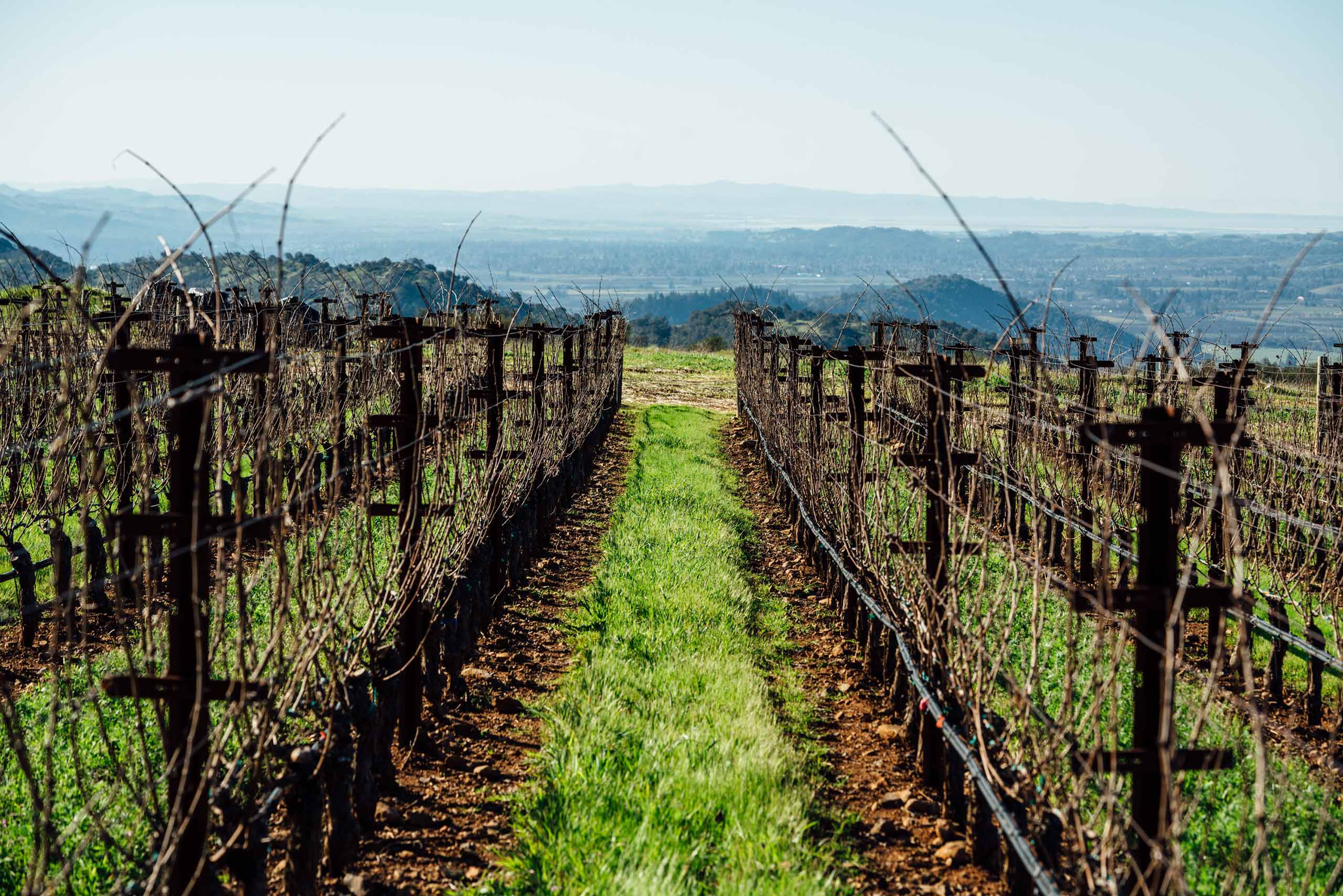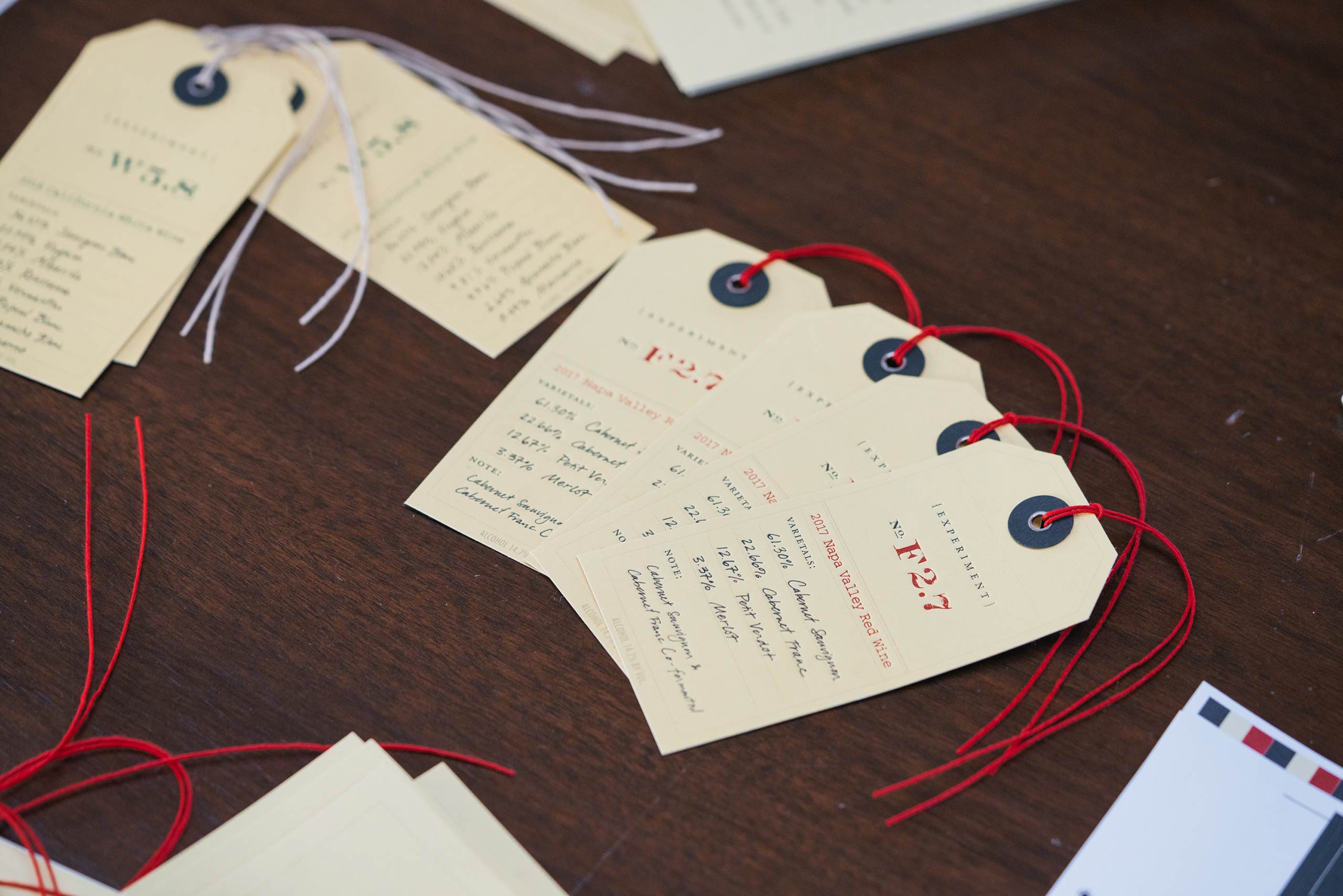What Drives Us

Speaking through every OVID wine is the singular voice of our site. The search to find this voice and the subsequent task of refining it—making it stronger, clearer, more sonorous, more articulate—is the essence of all that we do. When we reflect upon what drives us, it’s the desire to understand our land, revel in the beauty of its voice, and then share it with the world.
Some people call this voice “terroir”: the unique combination of conditions, expressed through wine, that makes a site distinctive and compelling. While the exact nature of this voice is difficult to describe using language and even difficult to locate in the first place, we can tell you a little bit about how we go about this somewhat nebulous process of discovery and refinement.
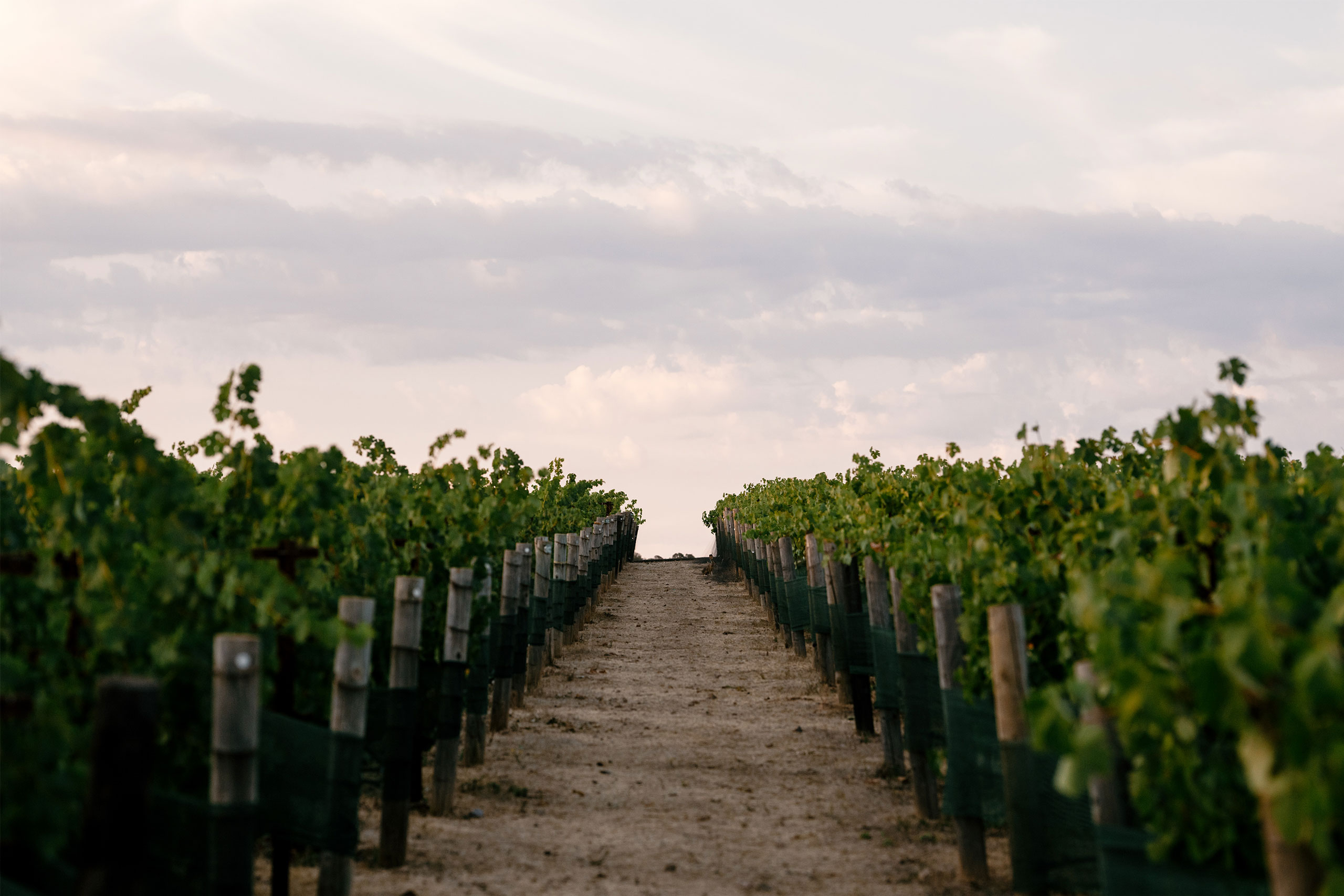
In his book “This Is the Voice”, John Colapinto describes how humans first begin to find and define what will become their voices. “It used to be believed that babies actually learned the different sounds by listening,” he writes. “And in a way that’s kind of wrong. What happens is they’re born with the full palate of sounds and the ones that they select as important are the ones that they hear from their parents around them.”
So it is how we begin to understand the voice of the land. We come to it with a full palate of our own tastes, beliefs and notions of beauty. Then, as the land begins to communicate a vast array of information regarding its character and preferences—we listen, consider and ultimately choose which traits we want to amplify or diminish. As such, simply identifying and defining OVID’s terroir is a creative act, informed by our own aesthetics.
Only one sure way exists to go about this process—spending vast amounts of time on Pritchard Hill, year after year, in meticulous observation, learning to hear those important sounds. For the sounds emanating from our vineyard are different than any other site’s—where grasses or certain flowers pop up, telling us stories about the earth beneath them, or how the shapes of tree or vine branches can teach us about how they interact with the wind. Of course, the nature of the wine given by the vines is a vast encapsulation of all of the minutiae. Weaving it into a coherent, beautiful symphony is no easy feat.
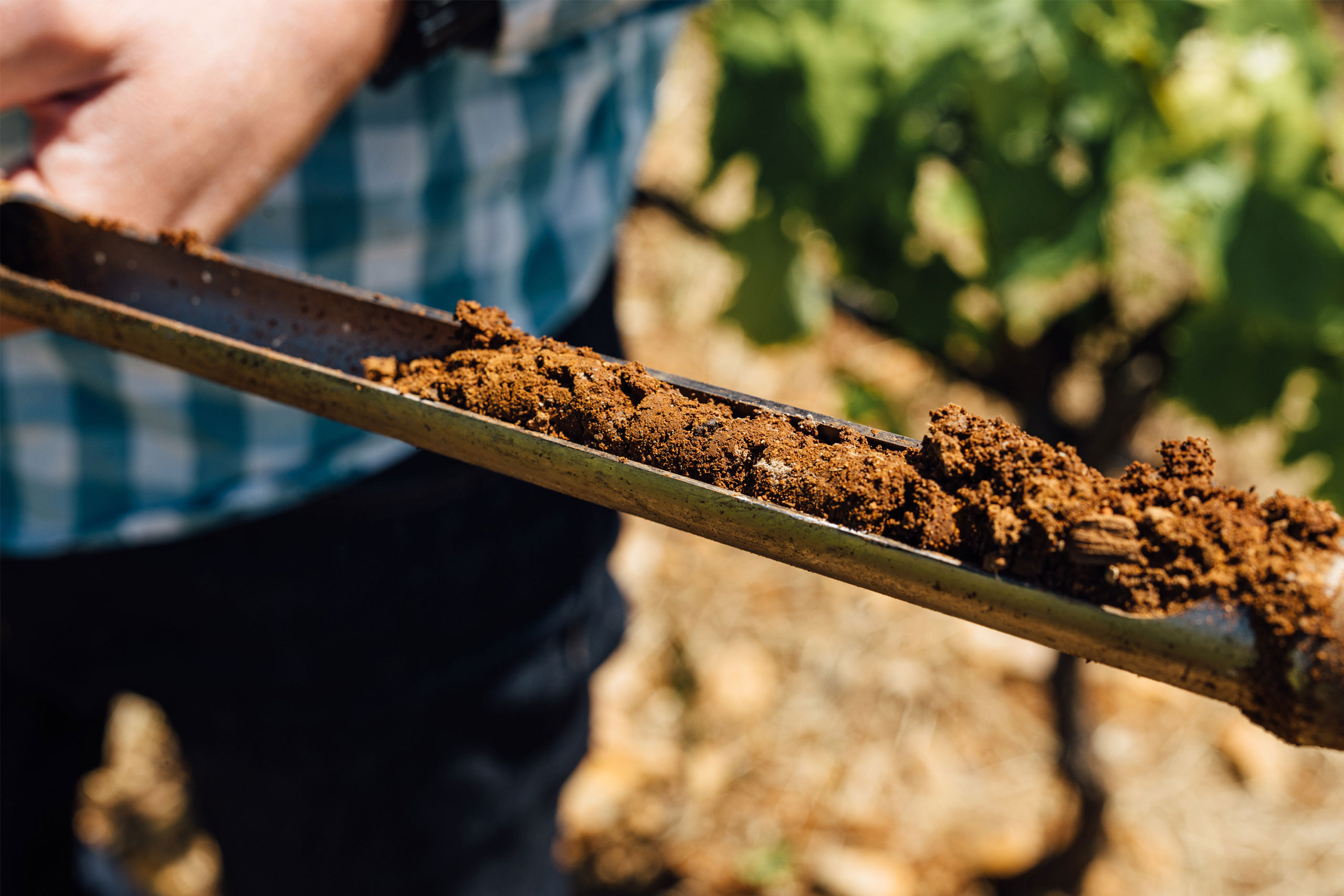
Our winemaker, Austin Peterson, has been working with the OVID land since its inception. He has spent almost his entire career up at this site, cultivating a relationship that only time and hard work can yield. In the vineyard, Austin’s love for farming and experimenting runs wild. What rootstock best expresses a particular piece of geology? How does changing row orientation in a specific block affect the tannic structure of the wines it produces? As he and the team engage the vines, the vines respond, describing their experience while giving clues as to how to craft the most enthralling wine possible.
Conducting these experiments takes years of care before conclusions can be reached. If you’ve visited our vineyards, you’ve seen the rootstock experiments, the row orientation comparisons, the canopy management testing. These all take place in the vineyard surrounding our tasting room, and their brimming possibilities are what greets Austin as he walks into work each day. To the common eye, it may look simply like a thriving, verdant vineyard on a hill. But just as certain sounds are deemed significant by the developing human brain, minute details that may escape the naked eye are important to a seasoned vineyardist.
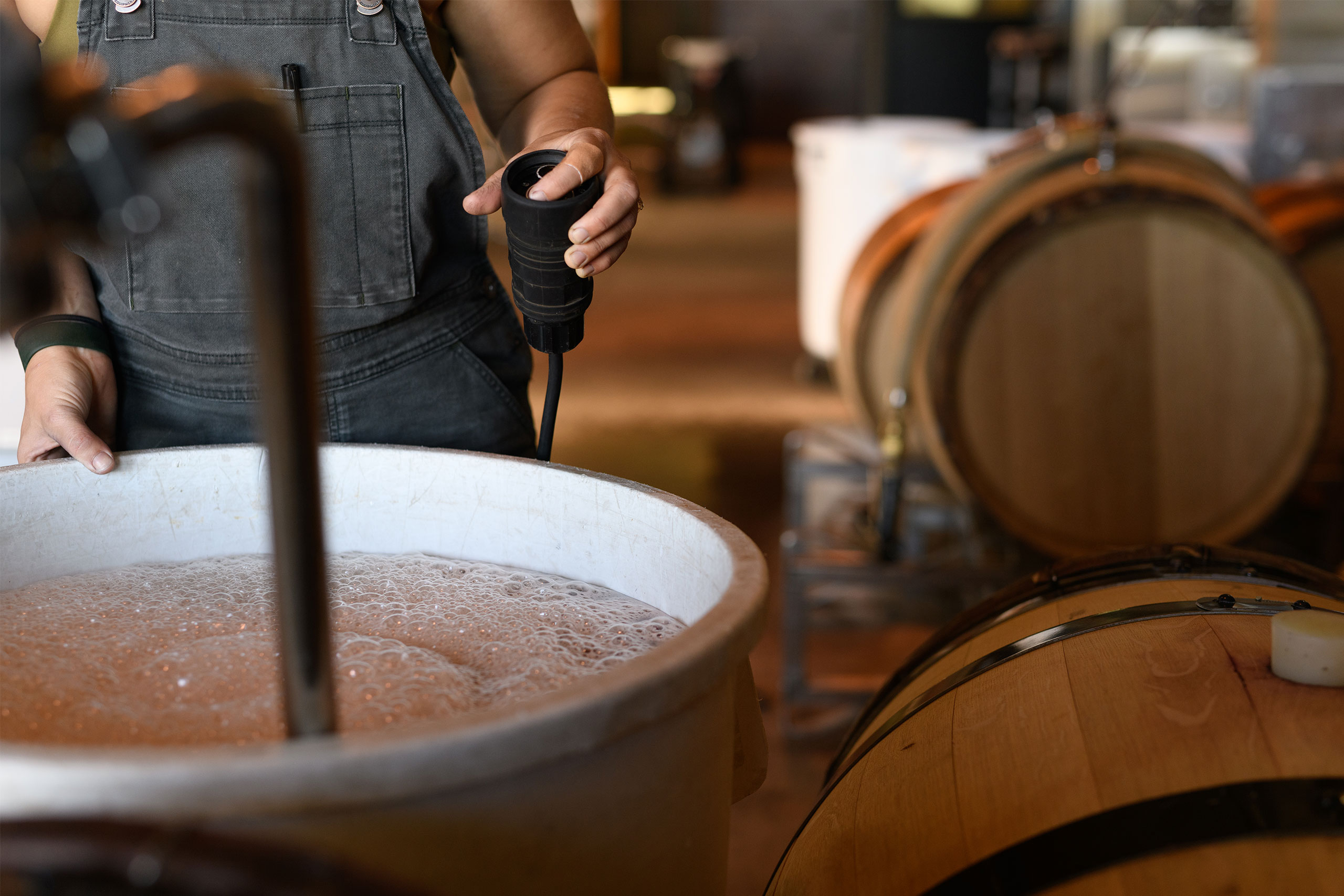
As grapes travel to the cellar, honing the expression of OVID’s voice is paramount. Seeking to perfect each part of the process, Austin and team conduct even more experiments with the goal of amplifying and honoring the singular voice of our site. What temperatures are ideal for fermentation? What size or material of fermentation vessel works best for each block? How long should a particular parcel be left on the grape skins?
The unmistakable, singularity of the OVID site is then captured, bottled and laid down to rest—like a book being printed, or a song being sung. When that bottle is opened, it’s a performance of that particular vintage at OVID, awaiting the sensation, consideration, and enjoyment of those who can distinguish its unique sounds. When the wine is at its expressive best, you hope to taste the wine and instantly know where it’s from and what that season was like—a profoundly beautiful, inspiring, and emotional feeling. That is what drives us.
